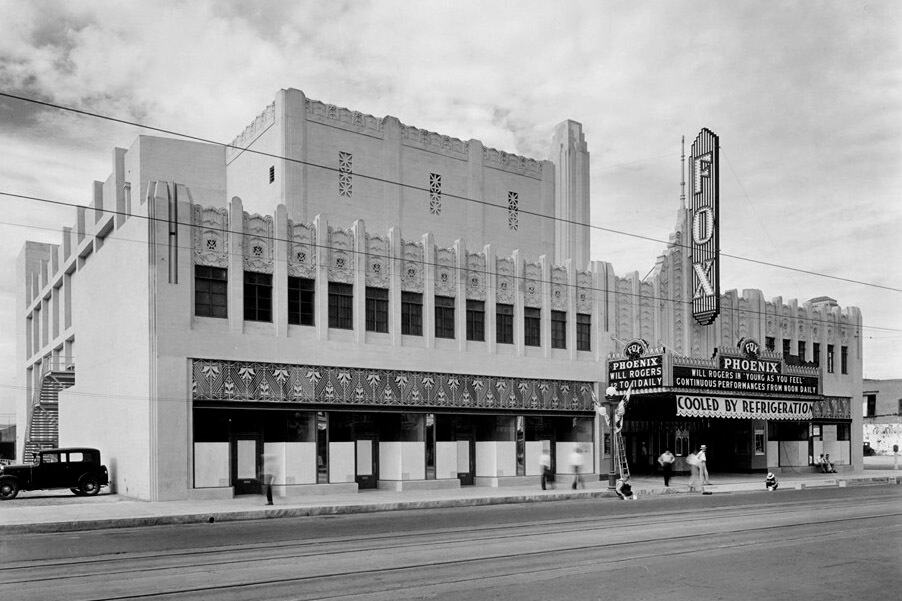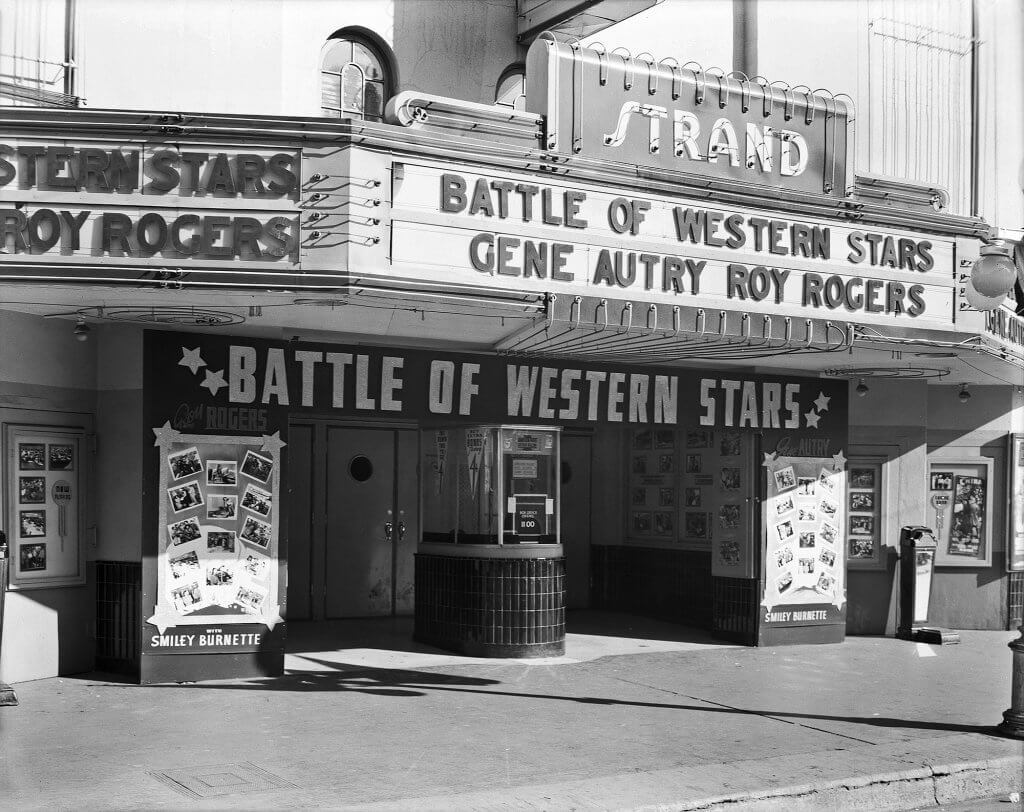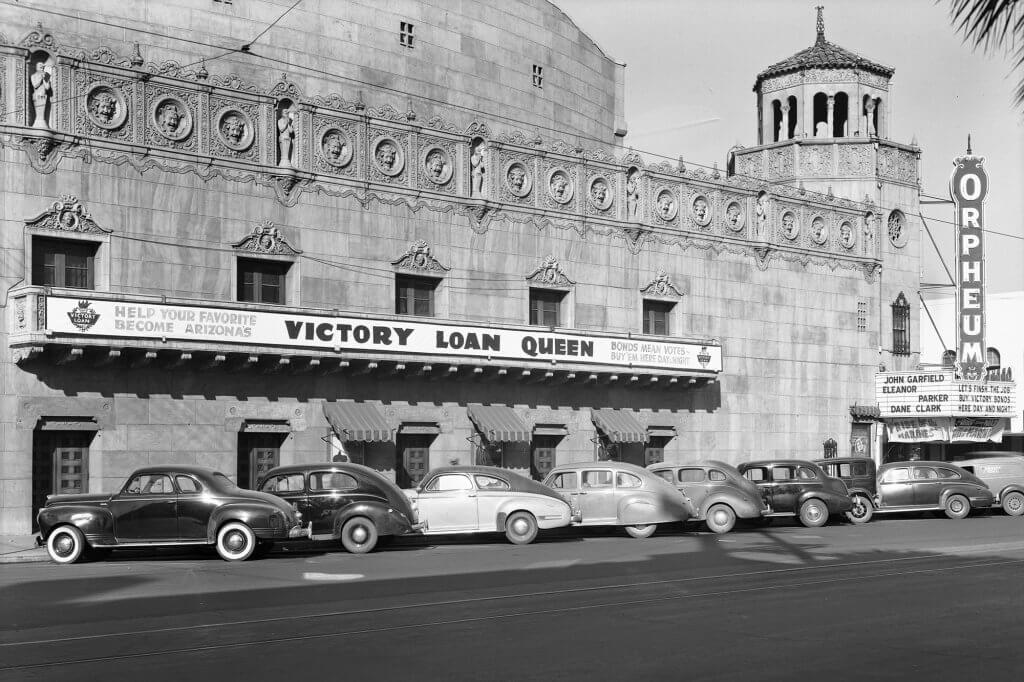When Bill Baker and his mom ventured to Downtown Phoenix to watch a movie in the 1930s, they had a specific routine. “There was always a double feature playing,” Baker recalls. “The film we wanted to see and another that wasn’t as good, which we called an ‘also-ran.’”
Baker recalls that his mom, Iva Baker, would time it so they would come when the second film was running. They would watch what was left of it, then the main movie, then the unseen first half of the second film. “Then, we would get up and say, ‘This is where we came in,’ and leave. That phrase stuck with me all these years,” Baker says.
In that era, before television and the internet, going to the movies was a huge entertainment outlet. The show started with the arrival at the theater, with its oversized sign, bold marquee, ornate ticket booth, and posters for the coming attractions.
Downtown Phoenix featured numerous theaters, but the most opulent and the first to have air conditioning was the 1,800-seat Fox Theater at 109 East Washington Street. The Art Deco theater opened in 1931 and was used for films, live performances, radio broadcasts, and special events.

The Art Deco Fox Theater, located at First Street and Washington, was dedicated July 30, 1931, and closed New Years Day 1974. A bus terminal subsequently occupied the site, and eventually Block 23, which now includes Fry’s Food Store. (Photo Courtesy of Douglas Towne/Arizona Memory Project)
“The Fox was beautiful, with a large lobby and a long, flowing staircase that led to the balcony, with a lot of red carpet,” Baker says. “The Fox had first-run movies and cost more for tickets, but was worth it for the elegance.” The Fox welcomed patrons for 44 years until it was demolished to create a bus terminal in 1975.
Baker’s go-to theater was the Strand at 106 West Washington on the north side of the street, west of the “five and dime” stores that included J.J. Newberry, F.W. Woolworth, and S.H. Kress. “The Strand had good but older movies, lots of Westerns, and tickets were cheaper,” he recalls. “On Saturdays, the Strand had a movie serial that was 20-30 minutes long where the hero was left in dire circumstances at the end of each episode, which made you want to come back the next week to see what happened. And there were always the cartoons and newsreels.” The Strand closed in 1964 and was later demolished.

The marquee of the Strand Theater, located on the north side of First Street and Washington, in 1944. (Photo: McCulloch Bros.)
The Fox and Strand theaters had ushers, often female, who wore a uniform and carried a flashlight, according to Baker. “When we entered from the lobby, she would ask where we wanted to sit,” he says. “Mom always would say, ‘halfway down,’ so the usher would lead us to seats in that location where we would enjoy the movie.”
But there was an ugly facet of daily life in Phoenix that movie patrons couldn’t escape. Baker says the Ramona and Rex theaters were on the north side of Washington further east and featured movies in Spanish. “Unfortunately, Phoenix was racially divided in those years, and these theaters reflected that reality,” Baker says. African-American moviegoers had to sit in the theater balconies until the Civil Rights Act of 1964.
The lone Downtown Phoenix movie palace of this era that has survived is the beloved Orpheum Theater at 203 West Adams Street. The venue, which opened in 1929, hosts a wide range of events and provides patrons with an opportunity to experience the elegance of going to the movies in Downtown Phoenix during the Golden Age of Hollywood.

The Orpheum Theatre in 1945, with notable curbside parking, and ‘Orpheum’ neon blade signage over its entrance. (Photo: McCulloch Bros.)




